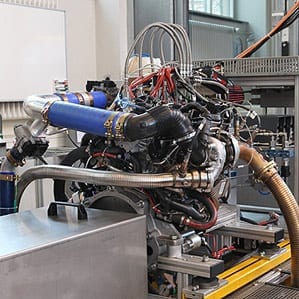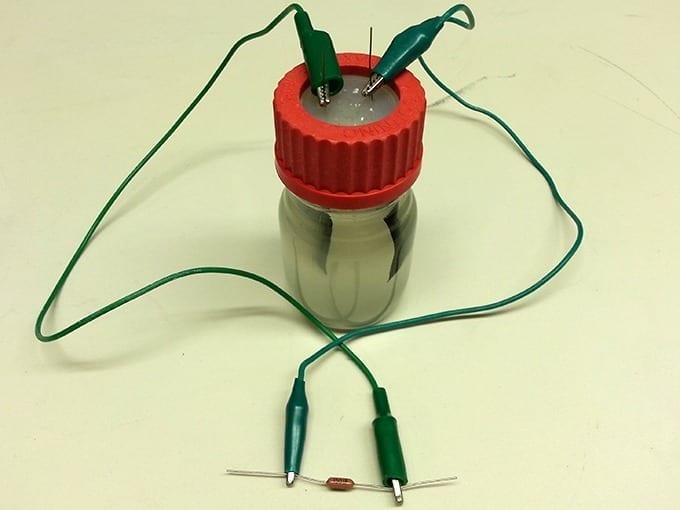
The stage is now set for superconductivity to branch out and meet some of the biggest challenges facing humanity today.
This is according to a topical review `Superconductivity and the environment: a Roadmap’, published today, 16 September, in IOP Publishing’s journal Superconductor Science and Technology, which explains how superconducting technologies can move out of laboratories and hospitals and address wider issues such as water purification, earthquake monitoring and the reduction of greenhouse gases.
Lance Cooley, a guest editor of the article who is based at the Fermi National Accelerator Laboratory, said: “Superconductivity has been meeting some great challenges over the past 50 years. The Large Hadron Collider, mankind’s largest machine, would not exist were it not for superconductivity.”
“There are many uses of superconductors in other big science projects, laboratory devices, and MRI systems. Now, as the roadmap outlines, new materials and technologies enable researchers and entrepreneurs to be more versatile and apply superconductivity in other ways that contribute to our everyday lives, such as innovations to benefit our environment.”
By utilising superconducting quantum interference devices (SQUIDs) – very sensitive contraptions that can measure extremely small changes in magnetic fields – one section explains how unexploded weapons, otherwise known as unexploded ordnances (UXOs), can be detected and safely recovered.
Thousands of UXOs are still discovered each year around Europe, especially in areas that were heavily bombed during the Second World War. They can be very unstable and still pose a major threat; however, the sheer scale and complexity of the terrain that needs to be surveyed makes detecting them very complicated.
A section by Pascal Febvre, from the University of Savoie, explains how a complete network of SQUIDs dotted around the globe could also aid the detection of solar bursts which send magnetic particles hurtling towards Earth, potentially wreaking havoc with our communication systems.
A similar network of SQUIDs could also help detect the specific magnetic signature of Earthquakes before they strike.
One area already progressing with the help of superconducting technology is high-speed rail travel. Magnetically levitating (Maglev) trains, whereby the carriage is levitated by magnets and has no contact with the track, have already been deployed in Germany, China, Japan and Brazil.
These countries are now looking to develop high temperature superconducting maglev trains which use liquid nitrogen instead of liquid helium to cool the tracks. This is expected to simplify the cooling process, reduce operational costs, offer more stable levitation and allow lighter carriages to be used, according to Motoaki Terai from the Central Japan Railway Company.
Kyeongdal Choi and Woo Seok Kim, from Korea Polytechnic University, explain how high temperature superconducting technologies can be used to effectively store power from wind and solar plants, as the weather dictates how much power can be generated at any one time, unlike non-renewable sources such as coal and oil which have a constant output.
The Latest Bing News on:
Superconductivity
- Quantum Breakthrough: Researchers Unlock New Realms in 1D Superconductivityon April 27, 2024 at 7:14 am
Researchers at the University of Manchester have made a major advancement in superconductivity by successfully maintaining robust superconductivity under high magnetic fields in a new one-dimensional ...
- Enhanced superconductivity in monolayer FeSe films on SrTiO₃(001) via metallic δ-dopingon April 26, 2024 at 10:21 am
Interface engineering has been proven to be effective in discovering new quantum states, such as topological states, superconductivity, charge density waves, magnetism, etc., which require ...
- Synthesis of two new carbides provides perspective on how complex carbon structures could exist on other planetson April 25, 2024 at 8:09 am
Researchers at the University of Bayreuth have gained new insights in the field of high-pressure carbon chemistry: They synthesized two new carbides—compounds of carbon and another chemical ...
- Manchester Scientists Find Novel One-Dimensional Superconductoron April 25, 2024 at 1:31 am
In a significant development in the field of superconductivity, researchers at The University of Manchester have successfully achieved robust superconductivity in high magnetic fields using a newly ...
- Judge dismisses superconductivity physicist’s lawsuit against universityon April 24, 2024 at 5:00 pm
Ranga Dias sued his university, in part, for allegedly conducting a biased investigation, which found he had committed extensive scientific misconduct.
- Exploring Unconventional Superconductivity in Synthetic and Natural Materialson April 24, 2024 at 8:12 am
Superconductivity is a notable discovery that has recently gained significant attention. Conventional superconductors, such as aluminum and niobium, are considered major participants in this domain. 1 ...
- Scientists develop novel one-dimensional superconductoron April 24, 2024 at 8:00 am
In a significant development in the field of superconductivity, researchers at The University of Manchester have successfully achieved robust superconductivity in high magnetic fields using a newly ...
- Condensed matter physics: Novel one-dimensional superconductoron April 23, 2024 at 5:00 pm
In a significant development in the field of superconductivity, researchers have successfully achieved robust superconductivity in high magnetic fields using a newly created one-dimensional (1D) ...
- Retractions are part of science, but misconduct isn’t — lessons from a superconductivity labon April 23, 2024 at 5:00 pm
Journals, funders and institutions that employ researchers all want to produce or disseminate rigorous scientific knowledge — and all can learn lessons from misconduct cases.
- MIT Technology Reviewon April 23, 2024 at 2:00 pm
A detailed study confirms that record-setting magnets built by the Plasma Science and Fusion Center and Commonwealth Fusion Systems meet the requirements for an economical, compact power plant.
The Latest Google Headlines on:
Superconductivity
[google_news title=”” keyword=”Superconductivity” num_posts=”10″ blurb_length=”0″ show_thumb=”left”]
The Latest Bing News on:
Superconducting quantum interference devices
- Unveiling a new quantum frontier: Frequency-domain entanglementon April 26, 2024 at 9:03 am
Scientists have introduced a form of quantum entanglement known as frequency-domain photon number-path entanglement. This advance in quantum physics involves an innovative tool called a frequency beam ...
- Mechanical strain control of quantum transport in graphene enables new class of nanoelectronic deviceson April 23, 2024 at 5:00 pm
and quantum interference effects. Platform for strain-engineering of quantum transport in 2DMs: applied theory, custom instrumentation, and device design. a) Sample holder geometry showing the bending ...
- Physicists Created an Exotic Superconductor Controlled by Magnetismon April 19, 2024 at 4:29 pm
While the FFLO state has been observed in superconducting materials as a bulk property, confining it to a Josephson junction in such a way that it can be controlled allows physicists to study the ...
- Single-Molecule Transistor Using Quantum Interferenceon April 16, 2024 at 2:35 pm
A new technical paper titled “Quantum interference enhances the performance of single-molecule transistors” was published by researchers at Queen Mary University of London, University of Oxford, ...
- A Superconducting Device May Twist Heisenberg’s Uncertainty Principleon April 15, 2024 at 9:02 am
In new research, scientists from Aalto University in Finland say they’ve skirted the Heisenberg Uncertainty Principle that underpins—or undermines—every experiment in quantum mechanics. The secret is ...
The Latest Google Headlines on:
Superconducting quantum interference devices
[google_news title=”” keyword=”superconducting quantum interference devices” num_posts=”10″ blurb_length=”0″ show_thumb=”left”]










